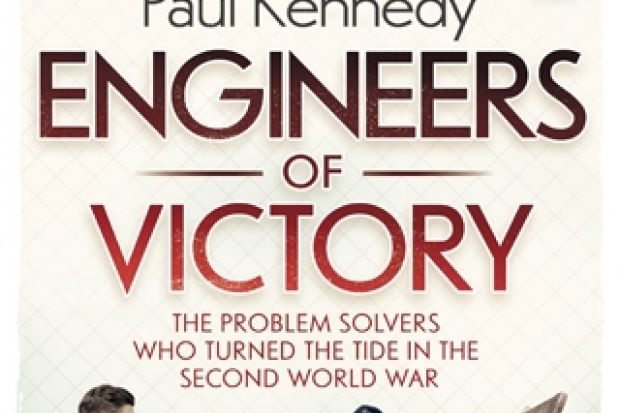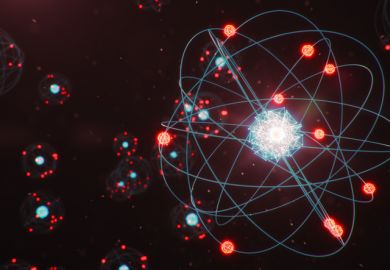Why did the Allies win the Second World War? Nearly 70 years after the conflict ended, one might have thought that historians would have broadly agreed on a clear answer. But it seems not. The debate is still thriving and over the past few years some new perspectives have been offered, including the view that the emergence of the Allies’ technological superiority was a crucial factor.
Two years ago, the historian of technology David Edgerton published the under-appreciated Britain’s War Machine: Weapons, Resources, and Experts in the Second World War, which demonstrated how the Allies’ victory owed much to the welter of resources, machines and technically skilled personnel deployed by the British. Now, in this fine new book, Paul Kennedy shows how the Allies’ problem-solvers - its engineers, in the broad sense of the term - turned the tide during the war and secured victory.
Most accounts of the war point out the significance of both the newly invented radar during the Battle of Britain and the breaking of the Enigma code by Alan Turing and his colleagues at Bletchley Park. Kennedy discusses these, too, although he considers the matter of cryptography in less detail than many readers will expect. He justifies this well, pointing out that the Allies’ achievements in the field of intelligence are, although undoubtedly important, sometimes exaggerated. There were significant intelligence failures as well as great successes.
Engineers of Victory is mainly concerned with the technical advances made by the Allies during the 18 months from January 1943, when Churchill and Roosevelt met at Casablanca. There, the two leaders met with their combined chiefs of staff to agree the political and operational guidelines for the future Anglo-American war strategy. They sought to win control of the Atlantic sea lanes, to attain command of the air space of all of west- central Europe, and to force their way on to enemy-held beaches so that Allied troops could make their way to the heart of the continent. Although this was a tall order, a year later all those operational aims were either accomplished or close to being achieved. How the boffins overcame the challenges is the central theme of this book.
Among Kennedy’s previous works, perhaps the best known are The Parliament of Man: The Past, Present and Future of the United Nations, and The Rise and Fall of the Great Powers: Economic Change and Military Conflict from 1500-2000, often cited as a modern classic. I was at first surprised by his choice of subject matter in Engineers of Victory, but I was mistaken. Here, as in his other books, he addresses huge themes in grand strategy and international relations through meticulous attention to detail and with a consistently impressive command of material across several centuries, back to the Elizabethans and the Ancient Greeks.
Kennedy has organised his material by considering the five central technical challenges that the Allies’ problem-solvers faced in January 1943: how to get convoys safely across the Atlantic; how to win command of air space; how to stop a blitzkrieg (“lightning war”); how to seize an enemy-held shore; and, finally, how to fight battles thousands of miles from home, that is, to overcome the “tyranny of distance”. He discusses each of these challenges in separate chapters, typically 70 pages long. There is plenty of detail and analysis in each, although perhaps less material on the personalities of the engineers than most non-specialist readers would have liked.
The first main chapter, on protecting convoys from U-boats, is one of the best in the book. After the war, Churchill wrote that the Battle of the Atlantic was “the dominating factor” throughout the conflict, and the aspect of the war effort that worried him most. Kennedy describes how the battle was gradually won by making good use of several ingenious technical advances. Among them were the coming of long-range, heavily equipped bombers that could stay with convoys for their entire journeys and - probably most important - the availability of the cavity magnetron, invented by John Randall and Harry Boot at the University of Birmingham. Their device enabled centimetre-wavelength microwaves to be generated at remarkably high power and was so compact that it could easily be installed in anti-submarine aircraft and used to track down and destroy enemy submarines.
One of the heroes of the Battle of the Atlantic was the physicist Patrick Blackett, who used mathematical analysis and scientific reasoning to help the Admiralty make better operational decisions. He argued that the most efficient way of transporting goods across the ocean was to increase the number of ships in each convoy from 30 to about 80. The strategy worked.
Blackett was certainly not happy with the way the Churchill government was running its scientific war effort. He was especially critical of the policy of intensively bombing German cities, which he regarded as immoral and wasteful of resources. Others, notably Churchill’s chief science adviser Lord Cherwell, vehemently disagreed with him. Kennedy gives here what I believe is an extremely fair account of this argument, as part of his account of how the Allies got the better of the Luftwaffe between February and May 1944, in time for D-Day. As Kennedy observes, this was one of the most decisive campaigns in history - and, as the Duke of Wellington said of the Battle of Waterloo, “a damned close-run thing”.
The other main chapters are equally instructive, bolstering one of the key lessons of the book - that it was not only the productive might of the Americans’ war machine and the quality of the Allies’ masters and commanders that eventually enabled the enemy to be vanquished. Just as important were the collective efforts of many technical experts - most of them unsung - who solved, with formidable expeditiousness, the problems the military had set them. Churchill had said that the war would be - and had to be - won by the “proper application of force”, although Kennedy suggests that a more felicitous phrase might have been “the intelligent application of superior force”.
In a thoughtful coda, Kennedy suggests that great wars are won by the forces that organise themselves most effectively and creatively, encouraging experts to come up with fresh ideas and then investing in the most promising ones. “There has to be a support system, a culture of encouragement, efficient feedback loops,” Kennedy writes, as well as “a capacity to learn from setbacks, an ability to get things done”. There is more than a whiff of corporate-speak in that sentence; as the author acknowledges, “in a certain way, the ghost of the late great [management guru] Peter Drucker hangs around the present book”. No one should be put off by this - Engineers of Victory is a work that has much to teach historians, strategists, technologists, scientists, politicians and even those allergic to management studies. It is, I believe, an interdisciplinary work of exceptional quality.
Like every first-rate book about modern history, this volume makes us reflect on the past and also leads us to think more deeply about the present and future. Kennedy’s account encourages us to be more curious about the reports we see and hear of current conflicts. The outcome will, if the past is anything to go by, depend not only on the participating politicians, the generals and the soldiers but, crucially, on their too often forgotten problem-solvers.
THE AUTHOR
Paul Kennedy, who attributes his racetrack gambling skills to “six years working for a bookmaker in Wallsend-on-Tyne”, is J. Richardson Dilworth professor of history at Yale University. “I live in New Haven, Connecticut with my wife, Cynthia Farrar, also a Yale prof, and our dog, Clare, named after Cynthia’s Cantab college. Three grown-up sons are scattered across the globe.”
His love of history began when he was “probably about 16, due to a fantastic history teacher at St Cuthbert’s Grammar School in Newcastle, Father Dennis Anderson”.
“My mother encouraged me to study, while my dad worked hard in the shipyards, but we had few books in our rotten little row house in Willington Quay. Dennis introduced me to early modern history, via Mattingly’s The Defeat of the Spanish Armada, and Wedgwood’s The Thirty Years’ War - unbelievable writers.
“I have no hang-ups about being a Geordie, except perhaps a strong Catholicism - we were in an Irish immigrant ghetto - and a due suspicion of London, plus a passion for and admiration of shipbuilders, miners, trawlermen. All my uncles had these trades.”
The recipient of Newcastle University’s first-ever first in history, Kennedy, who was then a “backward, shy kid”, went on to complete a PhD at St Antony’s College, Oxford and served as assistant to Basil Liddell Hart. “Was I intimidated? Heck, I was 21 years and 3 months when I started working for him, but the next four years were among the most important of my life; he gave me free hand not only to research for his final book but to draft 10 chapters of it.”
His pastimes include hawk-watching, tending roses and perennials, “hill- walking, [although] now crippled by a return of childhood polio, and old English churches. Cynthia and I are working our way along the Saxon and Norman churches of the South Coast on visits each summer”; highlights include “Up Marden, in the woods, deserted, where St Wilfrid converted the South Saxons”. Seeing the film Lincoln “was a revelation”, as “I am hopeless at American history”.
Engineers of Victory: The Problem Solvers Who Turned the Tide in the Second World War
By Paul Kennedy
Allen Lane
464pp, £25.00 and £14.99
ISBN 9781846141126 and 47289 (e-book)
Published 31 January 2013




